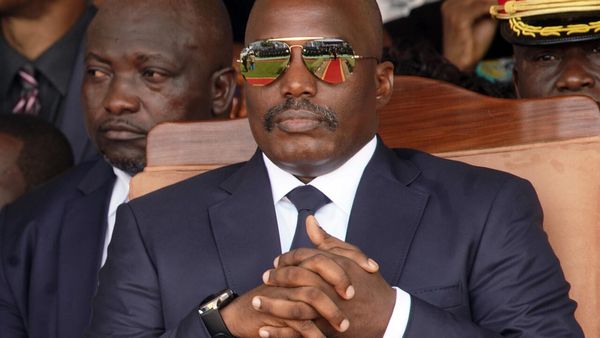Last week, the rupee weakened against the dollar past the 81-mark to a record low. In recent months, the Reserve Bank of India (RBI) has been intervening in the forex market to smoothen the decline. With the RBI dipping into its kitty for this purpose, Indian foreign exchange reserves have fallen by about $94 billion in 12 months to about $545 billion until mid-September. How much more forex can the RBI afford to use in reducing currency volatility? Does the benchmark interest rate, as a policy tool, have a role to play? Dharmakirti Joshi and Lekha Chakraborty discuss these questions in a conversation moderated by K. Bharat Kumar. Edited excerpts:
What is your view on the RBI’s actions to stem the rupee’s decline? How much of its forex reserves should it use for this?
Dharmakirti Joshi: The use of forex reserves is appropriate at this juncture. You build your reserves during good times and spend them during bad times. Right now, reserves are being spent in trying to curb currency volatility. You can’t defend the rupee at a particular level, because that would be swimming against the tide, which is not possible in this environment. But you can make it less volatile. Having said that, there is also a limit to how much you can lean on the reserves. They can burn out pretty quickly if you are aggressive in your interventions. So, you need a multi-pronged approach, which involves several measures, which the RBI has already taken to increase the supply of U.S. dollars in the Indian market, such as easing provisions for remittances, allowing short-term foreign portfolio investments in government securities, etc. We can even think of a scheme similar to the one introduced in 2014 to attract NRI investments.
Also read | Rupee has held up very well against U.S. dollar compared to other currencies: Finance Minister
You also need to let the rupee depreciate in an orderly manner. Some, but not too much, depreciation will partly help the export sector, as global demand is the key influencer of exports, and currencies of our competitors are also weakening. So, the vulnerability that stems from high current account deficit (CAD) can get addressed to some extent.
The interest rate channel also needs to be used. In Friday’s monetary policy announcement, we believe the RBI will go in for a 50 basis point hike. Part of it will be to address domestic concerns and part of it will also help mute the impact of the U.S. Federal Reserve’s rate hikes.
Lekha Chakraborty: There is a limit to the RBI continuously managing volatility because exchange rate management is not its mandate, but price stability through inflation containment is. The root cause of this rupee volatility is the Federal Reserve’s decision to raise rates. They are in an aggressive, hawkish mode, which is spurring foreign portfolio investors to move out of emerging markets. So, bridging the interest rate differential is the policy tool we should be using, because volatility management can also give a panic signal to the market. In the [current] Monetary Policy Committee (MPC) meetings, if we can front load that for macroeconomic stability, and for stability in the currency markets, that could be effective. I can understand that geopolitical uncertainties, the war in Ukraine, energy price volatility, all contribute to this situation, but predominantly, it is the Western world going hawkish, with U.S. Federal Reserve Chair Jay Powell at the Jackson Hole meetings talking about “keeping at it... until the job is done”, referring to a series of interest rate hikes... given all that, the predominant narrative for us should be interest rate defence, rather than continuous currency market management by intervening to control the volatility. Let the rupee depreciate.
Also read | Only request to PM Modi is to stop Rupee from scoring century: Congress
For an economy like India’s, what is the level of forex reserves in terms of number of months of import cover? Is this measure adequate?
Dharmakirti Joshi: The import cover is one way to measure reserves adequacy, but it’s a very narrow one. There are other measures such as the Guidotti–Greenspan rule that looks at external debt that is less than one year, i.e., short-term debt. Forex reserves should be sufficient to service those. From that point of view, we still have adequate reserves.
Is the real effective exchange rate (REER) that measures trade competitiveness with other nations using a basket of currencies a good guidepost for the RBI in forex management?
Lekha Chakraborty: It may not be a good approach. I would stick to the interest rate defence. On Friday, if the MPC moves back to ‘neutral’ from an ‘accommodative’ stance, and front loads the rate hike, that could be an effective way to target macroeconomic stability. During the taper tantrum in 2013, what helped us was addressing the macroeconomic fundamentals. Mounting inflation is also feeding into import costs. And that is widening the CAD. But even earlier, we have lived with CAD of 4% of GDP; what is important is how you finance this deficit. If we can finance the CAD with capital inflows, and prevent hot money outflow with the aid of interest rates, that could be an effective long-term solution.
Also read | Indian rupee showed more resilience than other currencies in recent years: Goyal
As a policy tool, is the interest rate lever adequate?
Dharmakirti Joshi: I would broadly agree that the interest rate instrument has to be used; what it means is that interest rates are being raised not only to control inflation, but also to address external imbalances. But let’s also look at past episodes of sharp depreciation of the currency which we have seen during the global financial crisis, during the taper tantrum. They tell us that that the currency weakens very sharply during these episodes of global shocks, but it also corrects. If you plot it over a 15-20-year period, you will see that the overshooting of the currency typically gets corrected after the event is over. So, the aim now should only be to ensure that volatility is not too high, not to steer the currency in any direction.
If the CAD hits 4%, as is being projected by some agencies, what are the consequences for the economy?
Lekha Chakraborty: We must look at the CAD and the capital account holistically. The focus should be on how we can stem capital that is flighty. Even during the tenure of Raghuram Rajan [as RBI Governor], the CAD went up to 4%. But the moment hot money became flighty, panic set in. Till then, we were comfortably financing the CAD with capital flows. Again, if you can manoeuvre the interest rate effectively, that can stem the outflow. But in using this tool, we have to focus on the real interest rate and economic growth, i.e., R and G, for public debt management. If the R is going to be greater than G, then we are in an unsustainable situation. The only way to address these concerns such as fiscal consolidation, twin deficit crisis, given that the real rate of interest is negative, given the hawkish mode of the Fed, is to raise rates.
Comment | Using a rupee route to get around a dominating dollar
A falling rupee was supposed to have exacerbated our external debt situation. Is that less of a concern now?
Dharmakirti Joshi: As per an RBI report, the stock of unhedged exposure of Indian corporates is about 44%, which means that 44% of the outstanding debt has not been hedged and is vulnerable to forex volatility. Weakening of the rupee, if sustained, will create stress in pockets. But the rupee hasn’t seen the kind of weakness that it saw during the taper tantrum; it was a massive depreciation over a very short period. Now, it is extremely orderly; it is even more orderly than in 2017-18, when the Fed was raising rates, trying to normalise policy. The pace of rupee depreciation has not been very severe this time to cause concern. But in this volatile global environment with a very aggressive Fed, we need to keep our fingers crossed.
Data | Making sense of Rupee’s record slump
Can you put a figure to how much more the rupee can decline?
Lekha Chakraborty: I will not take a guess on how far we can allow the rupee to depreciate because it’s all ad hoc configuration of the demand and supply... our exchange rate is market-determined. So, let the market forces play out. I only want to clarify my point that the RBI needs to intervene only if the rupee is on a sustained free fall. I will be comfortable if forex reserves in terms of the import cover are close to 15 months. So, that’s the way we learned last year around September, the import cover was close to 15 months, when forex [reserves] were at their all-time high. This can be a guiding measure, not a threshold or anything. RBI’s liquidity guidance is yet another.
Dharmakirti Joshi is Chief Economist, CRISIL Ltd Lekha; Chakraborty is Professor, NIPFP; and Member, Governing Board of Management of International Institute of Public Finance, Munich







